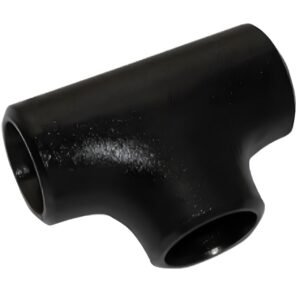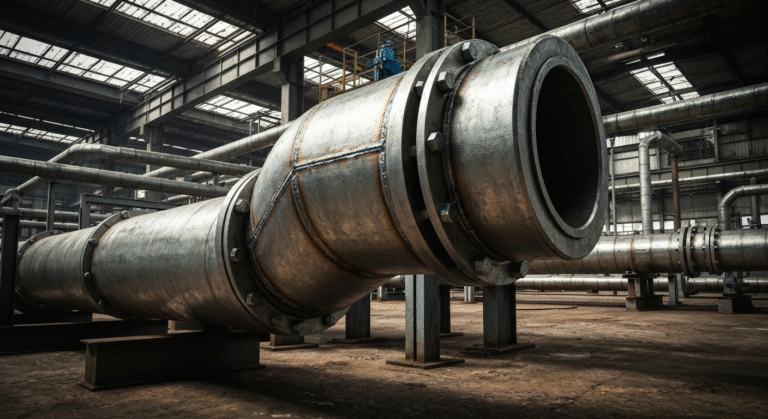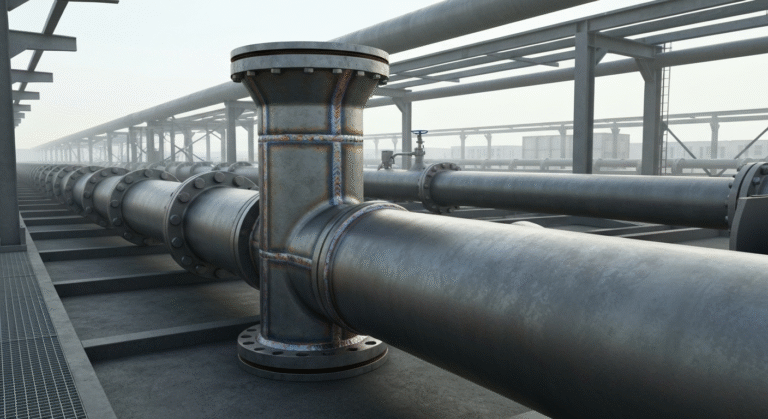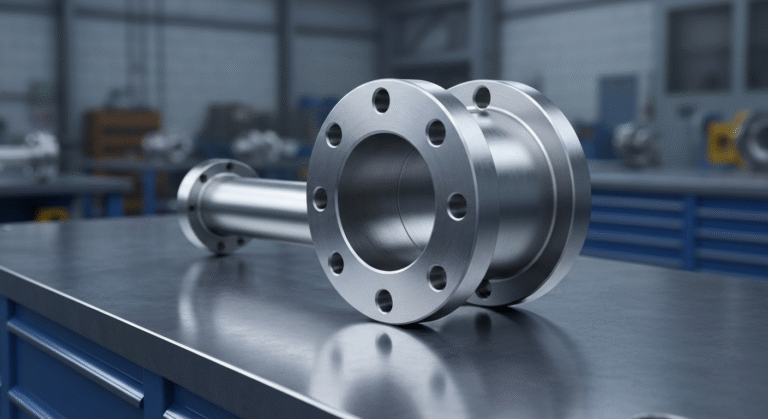-
Промышленная зона Иньчжуан, уезд Мэнцюнь, город Цанчжоу, провинция Хэбэй, Китай
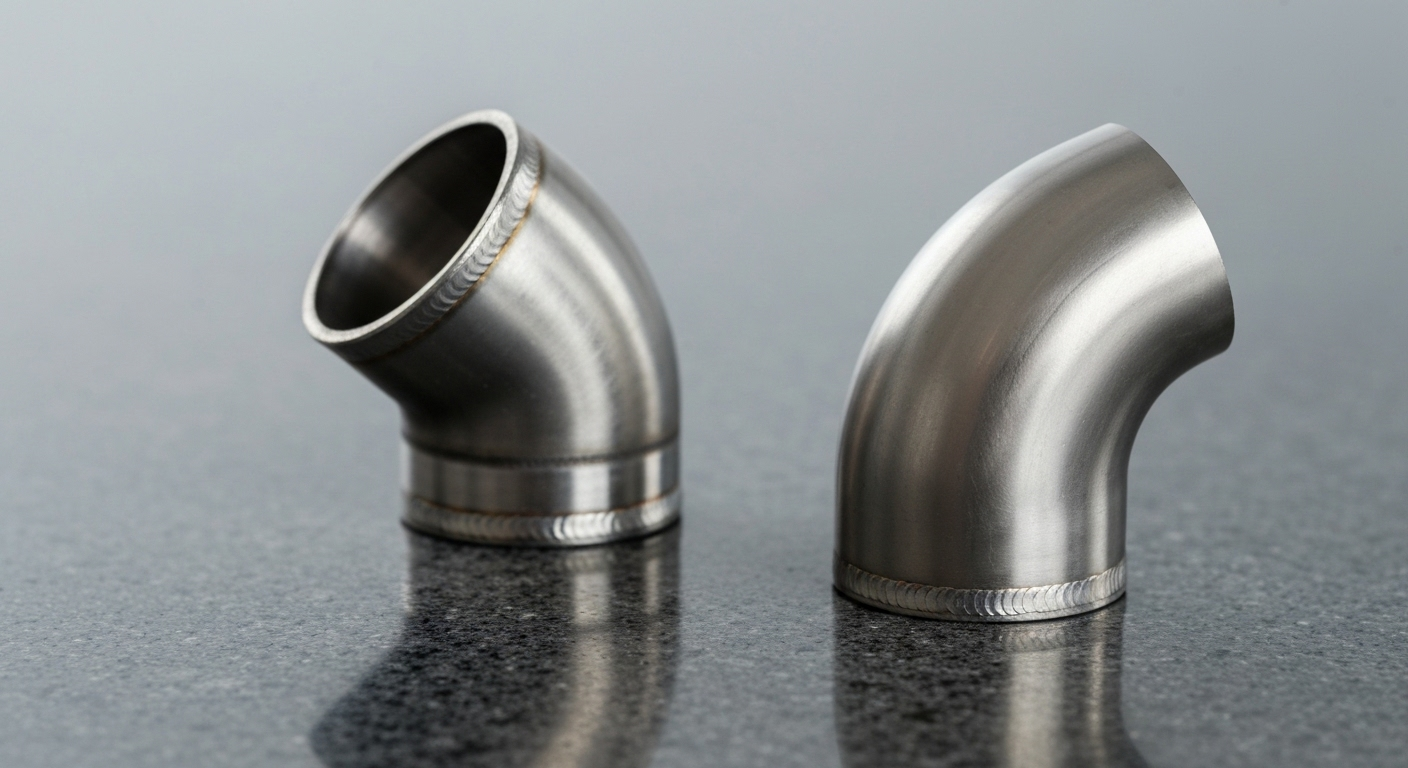
Типы бесшовных колен: Углеродистая сталь и нержавеющая сталь

Основные моменты
- Seamless elbows are essential pipe fittings used to change the direction of flow in a steel pipe system.
- The manufacturing process involves creating the elbow from a single piece of material, resulting in a stronger final product without a seam.
- Unlike a welded elbow, a seamless steel pipe elbow offers superior strength and reliability for high-pressure applications.
- They are available in materials like carbon steel and stainless steel to suit various industrial needs.
- Key specifications include the angle of the bend, wall thickness, and radius, which determine their suitability for a pipeline.
- These fittings are crucial in industries such as oil and gas, power energy, and water treatment.
Введение
In many piping systems, you often need to change the direction of the flow. Pipe elbows are the parts that do this job, and they usually work at 45° or 90° angles. When you look at the options, you will see that a seamless steel pipe elbow is known for its strength and how well it works. Because it is made from one solid piece of material, you don’t have the common problems that come from welded joints. In this guide, we will talk about what makes seamless elbows special, and look at the two main types you will see: strong carbon steel pipe and stainless steel pipe, which does well against rust. These fittings are important for any piping job that needs safe and long-lasting steel pipe systems.
Key Characteristics of Seamless Elbows

The main thing about a seamless elbow is that it is made from one piece of steel. It does not have any seams or welds. Because of this, the fittings stay strong and are not likely to break where there would be a seam. This makes these steel pipe fittings good for places where there is high pressure and high heat.
Also, a seamless steel pipe elbow has a smooth inside surface. This helps the flow stay the same and gives little pressure drop when the pipe needs to change direction. These fittings meet set industry rules, like those from ASME. The standards help make sure the wall thickness, size, and shape are always right. Knowing about these things will help you pick the right fittings for your system. Next, we will look at how seamless options do against welded ones and what benefits they can give you.
Differences Between Seamless and Welded Elbows
How does a seamless elbow differ from a welded elbow? The fundamental distinction lies in their manufacturing process. A seamless steel pipe elbow is forged from a single, solid piece of metal, resulting in a continuous and uniform structure. In contrast, a welded elbow is created by joining two pieces of pipe, which introduces a weld seam.
This difference in production directly impacts performance. The absence of a seam makes seamless elbows stronger and more reliable, especially in critical applications involving high pressure or corrosive materials. Welded elbows, while often more cost-effective, have a potential weak point along the weld that can be susceptible to defects or corrosion over time.
Seamless elbows are available in a wide range of sizes and dimensions, typically ranging from ½ inch up to 48 inches in diameter. Standard specifications often include thicknesses that conform to various schedules, such as SCH 10, SCH 40, and SCH 80, to meet diverse piping requirements across industries.
To better illustrate these differences, consider the following comparison:
Характеристика | Бесшовное колено | Сварное колено |
|---|---|---|
Производственный процесс | Made from a single piece of material without any joints. | Formed by welding two separate pieces of pipe together. |
Structural Integrity | Higher strength and durability due to a uniform structure. | The weld seam can be a potential point of weakness or failure. |
Обработка давлением | Ideal for high-pressure and high-temperature applications. | Suitable for low to moderate pressure systems. |
Стоимость | Generally more expensive due to the complex manufacturing. | More cost-effective, especially for larger sizes. |
Benefits of Using Seamless Elbows in Piping Systems
When you design or take care of a pipeline, you need to pick the right parts for safety and to keep it working well over time. Seamless elbows have some clear benefits when you look at them next to welded elbows. This is why many people pick seamless elbows for tough jobs or places. You might wonder what makes seamless elbows better than welded ones. It comes down to the way they are made, which helps them work better.
The main benefit is how strong they are. Since seamless elbows are made from just one piece of material, they do not have the weak spot that comes from a weld seam. This makes the fittings much stronger, and they handle higher pressure, hot and cold temperatures, and extra force without leaking or breaking at the seam. Because of this, your pipeline will last longer and not need as much fixing over the years.
Seamless elbows are available in a range of sizes and dimensions to suit various piping applications. Common sizes typically include diameters from 1/2 inch up to 24 inches, with wall thicknesses designated by pipe schedules like SCH 40, SCH 80, and more, allowing you to choose the best fit for your system’s requirements.
Key benefits of seamless elbows include:
- Повышенная прочность: The seamless design gives more strength and helps fight back against pressure and stress.
- Increased Reliability: No weld seam means a smaller chance for leaks or breaking, so it is safer to use in the pipeline.
- Superior Performance: These fittings work well when you have dangerous liquids, lots of pressure, or tough conditions in your line.
- Longer Service Life: Because they are built strong, you get a part that lasts and gives better value as time goes on.
Заключение
To sum up, knowing the different types of seamless elbows, like carbon steel and stainless steel, helps you make better choices in piping. Seamless elbows give you more strength and help stop leaks compared to welded ones. When you look at what each material can do, how good it is, and when to use it, you can make sure your project is safe and works well. If you want more help picking the right seamless elbow for your project, just ask for a consultation. Your piping project should always get the best.
Часто задаваемые вопросы
What materials are most common for seamless elbows?
The most used things to make a seamless steel pipe elbow are carbon steel and stainless steel. People use carbon steel elbows that usually follow ASTM A234 standards. Stainless steel elbows mostly meet both ASTM A403 and ASME rules. The most used grades for these elbows are 304L and 316L. These elbows are good picks when you need a steel pipe that is strong and lasts a long time.
Where are carbon steel and stainless steel seamless elbows typically used?
These pipe fittings are used the most in tough jobs. You will see them often in high-pressure pipeline systems for oil and gas, power energy, chemical processing, and water treatment. These fittings also be in drilling services where being reliable is very important.
How do I choose the right seamless elbow type for my project?
To pick the right elbow, you need to look at what the project needs. Check the wall thickness, the outer diameter, and see if you need a long radius. Think about how well you need it to work and what the pricing is. It’s a good idea to talk with a leading manufacturer to get help making the best choice.
